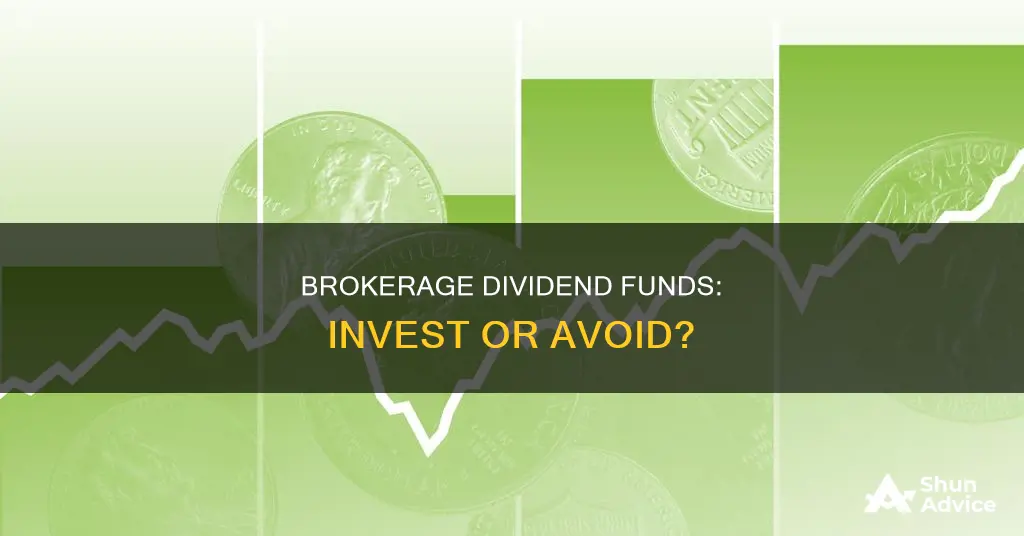
Dividend stocks can be a great addition to your investment portfolio, especially in the current market environment. They can provide a regular income stream, protect your money against inflation, and offer some stability to your portfolio. Dividend-paying stocks are shares of companies that distribute a portion of their profits to shareholders, typically on a quarterly, semi-annual, or annual basis. These stocks tend to be well-established companies with stable financials, and their dividends can provide a cushion against falling stock prices. However, it's important to remember that not all high-dividend stocks are a good investment. Some companies may be forced to cut their dividend payments if they experience business challenges, and a very high dividend yield may indicate that a company is returning too much of its profits to investors instead of reinvesting in its growth.
| Characteristics | Values |
|---|---|
| Advantages of dividend stocks | Extra income, sign of quality, lower volatility, protection in volatile or declining markets |
| Disadvantages of dividend stocks | Less risk means less potential upside, potential for increased tax burden, opportunity cost |
| Dividend yield formula | Dividend Yield = Dividend/Price × 100 |
| Dividend payout ratio | Dividend amount / net income for the same period |
| Dividend coverage ratio | Net income / declared dividend or earnings per share / dividend per share |
| Dividend growth rate | How much a company's dividend has grown annually over a period of time |
| Dividend reinvestment | Dividends can be reinvested to buy more shares of the company through a dividend reinvestment plan (DRIP) |
What You'll Learn

Dividend stocks vs dividend funds
Dividend stocks are issued by well-established, financially stable companies that regularly pay shareholders a portion of their profits. Dividend funds, on the other hand, are mutual funds or ETFs that invest in multiple dividend stocks, providing instant diversification.
Advantages of dividend stocks
Dividend stocks can provide a regular income stream, making them attractive to income-seeking investors. They also offer the potential for long-term capital appreciation and are often less volatile than growth stocks.
Additionally, investing in individual dividend stocks allows investors to build a custom portfolio that may offer a higher yield than a dividend fund. Expenses can also be lower with dividend stocks, as ETFs and index funds charge an annual fee.
Disadvantages of dividend stocks
Investing in individual dividend stocks requires more research and effort on the part of the investor. It can be challenging to build a diversified portfolio, as individual stocks represent ownership in a single company.
Advantages of dividend funds
Dividend funds offer instant diversification, as they invest in a collection of dividend-paying stocks. They also benefit from professional fund management and tend to have lower expense ratios than actively managed funds.
Disadvantages of dividend funds
Dividend funds may not offer the same level of potential returns as investing in individual stocks with high growth potential. Additionally, dividend funds are subject to market risk and can experience declines in value.
In summary, dividend stocks may be a better option for investors who prefer to choose their own investments and are comfortable with the research and effort required. Dividend funds, on the other hand, are a good choice for investors seeking a low-cost, diversified, and reliable source of income.
Monthly Mutual Fund Guide: Investing $1000 Wisely
You may want to see also

Dividend yield
When assessing a dividend yield, it is important to look at other factors, such as the dividend payout ratio and the company's financial health and stability. A low dividend yield may be preferable if it is accompanied by strong financial results and the potential for future growth.
Mutual Fund Liquidity: Why More Liquid Investments Are Needed
You may want to see also

Dividend payout ratio
The dividend payout ratio is a key financial metric used to determine the sustainability of a company's dividend payment program. It is the amount of dividends paid to shareholders relative to the company's net income. It is sometimes referred to simply as the "payout ratio".
The dividend payout ratio is calculated by dividing the dividend amount by net income for the same period. The ratio is usually expressed as a percentage. For example, if a company issued $20 million in dividends in a period with $100 million in net income, the payout ratio would be 20%.
The dividend payout ratio is useful for investors as it helps them determine which companies align with their investment goals. A high dividend payout ratio means the company is reinvesting less money back into its business and paying out more of its earnings in dividends. Such companies tend to attract income investors who prefer a steady income stream to potential growth in share price. On the other hand, a low dividend payout ratio means the company is reinvesting more money back into its business, which could generate higher levels of capital gains for investors in the future. These types of companies tend to attract growth investors who are more interested in potential profits from a significant rise in share price.
The dividend payout ratio is also useful for gauging a company's level of maturity. Younger, more rapidly growing companies are likely to reinvest most of their earnings into the business for future growth and therefore have a low dividend payout ratio. More mature, established companies, on the other hand, are more likely to have a high dividend payout ratio as they do not need to commit a high percentage of their earnings to business expansion.
It is important to note that there is no ideal dividend payout ratio, as it depends on the industry, nature of the business, and maturity and business plan of the company. Fast-growing companies usually have a lower ratio, while slower-growing, more mature companies tend to have a higher ratio.
Investing in ICICI Prudential Bluechip Fund: A Comprehensive Guide
You may want to see also

Dividend coverage ratio
The dividend coverage ratio (DCR) is a financial metric that measures a company's ability to pay dividends to its shareholders. It is calculated by dividing a company's net income by the dividends it pays out to shareholders. The formula for calculating DCR is: Dividend Coverage Ratio = Net Income / Dividend Declared.
Net income refers to the earnings of a company after all expenses, including taxes, have been paid. Dividend declared refers to the amount of dividend to which shareholders are entitled.
The DCR indicates the number of times a company could pay dividends to its shareholders using its net income over a specified fiscal period. A DCR of above 2 is considered healthy, while a DCR of below 1.5 may be a cause for concern.
It is important to note that the DCR has some limitations as a metric. Net income can vary significantly from year to year, so a high DCR based on past performance may not be a reliable indicator of future dividend risk. Additionally, net income does not always equal cash flow, so a company with a high net income may not have sufficient cash available to make dividend payments.
When evaluating dividend stocks, investors should consider a combination of ratios, such as the dividend payout ratio, dividend coverage ratio, free cash flow to equity, and net debt to EBITDA ratio.
Index Funds: Regular Investing for Long-Term Success
You may want to see also

Dividend growth rate
The arithmetic mean method calculates the average growth rate over multiple years. For example, if a company's dividend payments to its shareholders over the last five years were $1.00, $1.05, $1.07, $1.11, and $1.15, the growth rates for each year would be 5%, 1.9%, 3.74%, and 3.6% respectively. The average of these four annual growth rates is 3.56%.
The compounded method formula is:
> DGR = [(Dividend(Dp) / Dividend(Dq))¹/ⁿ - 1]
Where Dp is the company's dividend value for a specific period (p), Dq is the company's dividend value for the initial period (q), and n is the time difference between p and q.
A history of strong dividend growth can indicate future dividend growth and signal long-term profitability. Dividend growth stocks come from companies that raise their payouts every year over the long term, demonstrating financial health and stability.
Banks' CD Fund Investment Strategies: Where Does Your Money Go?
You may want to see also
Frequently asked questions
Investing in lower-dividend funds can provide diversification to your portfolio and potentially higher growth over the long term. Lower-dividend companies tend to reinvest their earnings back into the business, which can drive growth and increase the value of your investment over time.
Not necessarily. While lower-dividend funds may offer the potential for higher growth, they also come with their own set of risks. These companies might be younger or in highly competitive industries, so there is a chance they won't perform as expected.
When selecting lower-dividend funds, look for companies with strong fundamentals, a competitive advantage, and a history of consistent or improving financial performance. It's also important to consider your investment horizon and risk tolerance.
The tax implications can vary depending on your location and the type of investment account you use. In some cases, dividends may be taxed as ordinary income, while in other cases, they may qualify for lower tax rates. Consult a tax professional for advice specific to your situation.
You can start by opening a brokerage account with an online broker, which will allow you to buy and sell funds. Research different brokers to find one that offers a range of investment options and low fees. From there, you can build a diversified portfolio of lower-dividend funds that align with your investment goals and risk tolerance.







